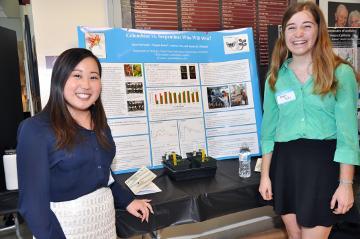
Columbine vs. Serpentine: Who Will Win?
Kate Horiuchi, Megan Kohn
Faculty Mentor: Justen Whittall
Species are the fundamental units of biodiversity, yet very little is known about the genes responsible for speciation. Plants are particularly amenable to studying speciation genetics because of their rapid generation times and ability to grow under controlled environments. Soil adaptations can be a powerful driver of speciation especially in California’s serpentine soils where there are 247 endemic species. The serpentine columbine (Aquilegia eximia) is restricted to serpentine seeps in central and northern California. Previous studies identified low Ca:Mg ratio (0.14) as a strong reproductive isolating barrier between the serpentine columbine and its closest relative, A. formosa. In reciprocal transplants, 100% of A. formosa died when planted in serpentine soil. In order to determine the genes responsible for speciation, we must be able to genotype living plants growing in serpentine soil. We performed a series of dilutions to determine the effects on A. formosa. We measured survival and growth rate of both species in these diluted soils. We confirmed the inability of A. formosa to survive on pure serpentine soil and discovered that most plants survive on slightly diluted serpentine soil (Ca:Mg 0.32). Differences in growth rates across the various serpentine soil dilutions are subtle.